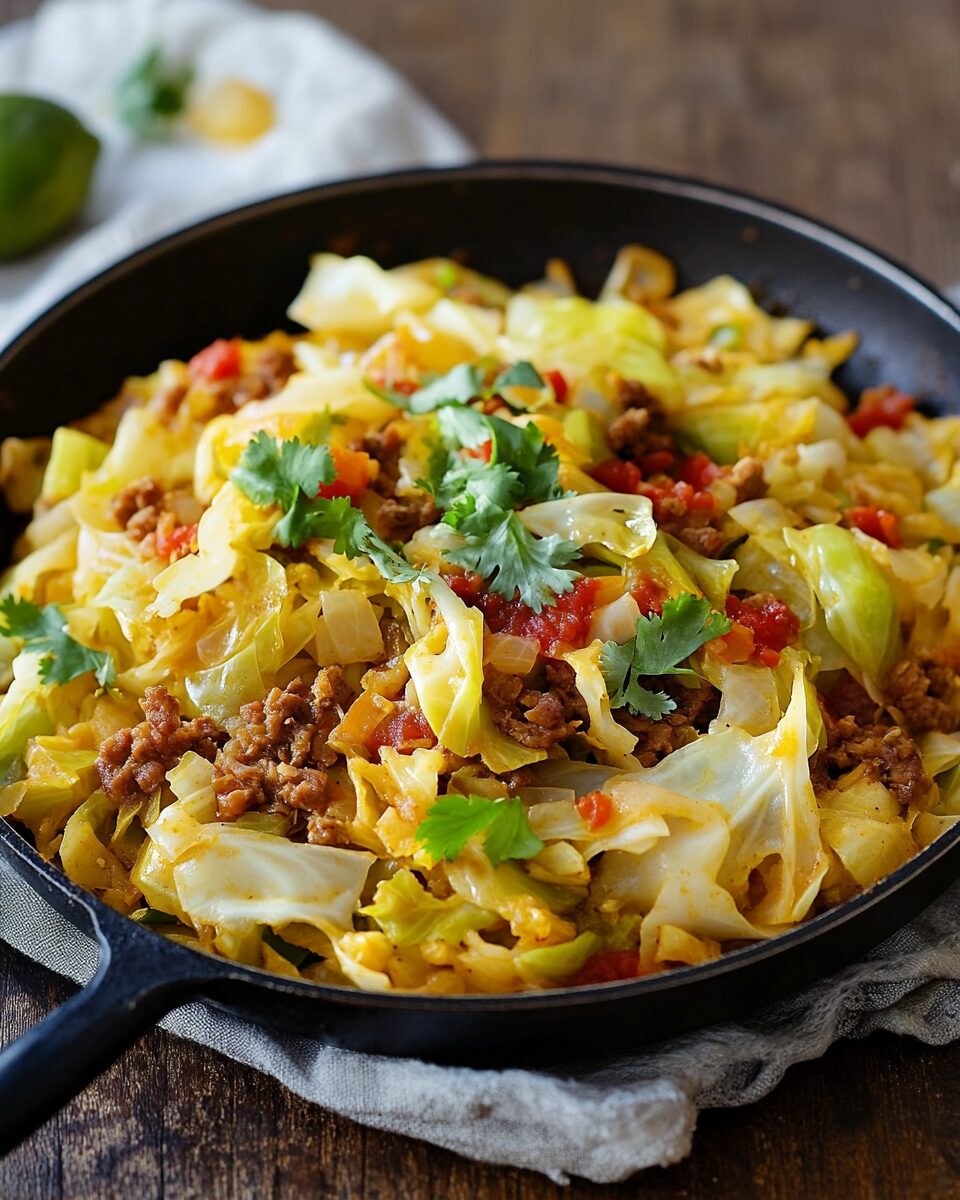A timeless French classic, Julia Child’s Beef Bourguignon transforms simple ingredients into a rich, comforting stew. Perfect for special occasions or a cozy family dinner, this recipe offers flexibility in preparation methods and tastes even better when made ahead.
FULL RECIPE
Ingredients
- 3 lbs beef brisket or chuck steak, cut into 2-inch cubes
- 6 oz thick-cut bacon, diced
- 1 large carrot, sliced
- 1 large white onion, sliced
- 6 cloves garlic, minced
- 3 cups full-bodied red wine (e.g., Burgundy, Merlot, Pinot Noir)
- 2–3 cups beef stock
- 1 tbsp tomato paste
- 2 tbsp all-purpose flour
- 1 lb fresh mushrooms, quartered
- 18–24 pearl onions, peeled
- 1 bay leaf
- 1/2 tsp dried thyme
- Salt and freshly ground black pepper, to taste
- 2 tbsp olive oil
- 2 tbsp unsalted butter
Directions
- Preheat oven to 350°F (175°C).
- In a large Dutch oven, cook diced bacon over medium heat until crispy. Remove bacon and set aside, leaving the rendered fat in the pot.
- Pat beef cubes dry with paper towels. Season with salt and pepper, then dust with flour.
- In batches, sear beef in the bacon fat until browned on all sides. Remove and set aside.
- Add sliced carrot and onion to the pot; cook until softened, about 5 minutes.
- Return beef and bacon to the pot. Add minced garlic and tomato paste; stir to combine.
- Pour in red wine and enough beef stock to just cover the meat. Add bay leaf and thyme.
- Bring to a simmer, then cover and transfer to the preheated oven. Cook for 2.5 to 3 hours, or until beef is tender.
- While the stew cooks, sauté mushrooms in butter until browned; set aside.
- In the same pan, sauté pearl onions until golden; set aside.
- Once the stew is done, remove from oven. Skim off any excess fat.
- Add sautéed mushrooms and pearl onions to the stew; simmer on the stovetop for 15 minutes.
- Adjust seasoning with salt and pepper to taste.
- Serve hot, garnished with fresh parsley if desired.
Nutritional Information
- Calories: 806
- Total Fat: 30g
- Saturated Fat: 11g
- Cholesterol: 138mg
- Sodium: 479mg
- Carbohydrates: 69g
- Dietary Fiber: 11g
- Sugars: 17g
- Protein: 50g
- Calcium: 263mg
- Iron: 14mg
- Potassium: 1919mg
The History of Beef Bourguignon
Beef Bourguignon is a French dish originating from the Burgundy region in eastern France. This hearty stew, known as “Bœuf Bourguignon” in French, has its roots in peasant cooking, where slow-cooked dishes were a way to tenderize tougher cuts of meat. Over time, the recipe evolved and gained popularity, particularly after being featured in Julia Child’s cookbook “Mastering the Art of French Cooking.” Julia Child is credited with bringing French cuisine to American households, and Beef Bourguignon became one of the signature dishes of French culinary traditions.
The Role of Wine in Beef Bourguignon
Wine is the defining ingredient in Beef Bourguignon. Burgundy, a region famous for its vineyards, produces some of the world’s finest red wines, which are traditionally used in this dish. The wine’s deep, rich flavors infuse the beef as it cooks, helping tenderize the meat and adding layers of complexity to the dish. The wine also helps create the rich, flavorful sauce that is one of the hallmarks of Beef Bourguignon.
The Importance of Slow Cooking
Slow cooking is crucial to Beef Bourguignon. It allows the flavors to meld together and the meat to become tender and juicy. The slow process of braising in wine and stock allows the beef to absorb all the aromatic ingredients, making the dish rich and flavorful. This cooking method also enhances the flavors of the vegetables and other ingredients, creating a well-balanced, savory stew.
Beef Selection for Beef Bourguignon
The cut of beef used in Beef Bourguignon plays a significant role in the final texture and flavor of the dish. Tough cuts such as chuck roast or brisket are ideal for slow cooking because they contain more collagen, which breaks down over time and results in tender, melt-in-your-mouth meat. These cuts are also more affordable, making them an excellent choice for a hearty, filling meal.
The Role of Bacon in Beef Bourguignon
Bacon adds a layer of smoky richness to Beef Bourguignon. It’s traditionally cooked at the beginning of the recipe, and the rendered fat is used to sear the meat, ensuring that each piece is well-browned and packed with flavor. Bacon’s smoky, salty flavor complements the richness of the beef and the earthiness of the mushrooms, creating a complex flavor profile.
The Use of Aromatic Vegetables
Aromatic vegetables, such as onions, carrots, and garlic, are essential in creating the depth of flavor that Beef Bourguignon is known for. These vegetables are sautéed at the beginning of the recipe to release their natural sweetness, which balances the richness of the beef and the acidity of the wine. The vegetables absorb the flavors of the meat and the wine during the slow-cooking process, becoming tender and flavorful.
The Role of Herbs in Beef Bourguignon
Herbs like thyme, bay leaves, and parsley are used to enhance the flavor of Beef Bourguignon. Thyme’s subtle earthy notes and the aromatic scent of bay leaves infuse the dish with depth. Fresh parsley is often used as a garnish, adding a touch of brightness and freshness to the rich stew. The combination of these herbs creates a balanced, aromatic flavor profile.
The Importance of Stock in the Recipe
Beef stock is an essential ingredient in Beef Bourguignon, providing the base for the rich sauce that envelops the meat. The stock adds flavor and helps create a thick, hearty sauce. Some variations of the dish use a combination of stock and broth, depending on the desired consistency and depth of flavor.
The Significance of Mushrooms
Mushrooms are a key component of Beef Bourguignon, adding an earthy, umami flavor that complements the beef and wine. The mushrooms are typically sautéed separately and added towards the end of the cooking process, which helps them retain their texture while still absorbing the flavors of the stew. Button mushrooms, cremini mushrooms, or even more exotic varieties like shiitake can be used, depending on personal preference.
Pearl Onions in Beef Bourguignon
Pearl onions are another important element in Beef Bourguignon. Their mild, slightly sweet flavor contrasts beautifully with the savory richness of the beef. Pearl onions are typically sautéed until golden before being added to the stew, where they soften and absorb the flavors of the broth. Their delicate texture and subtle sweetness provide balance to the dish.
The Versatility of Beef Bourguignon
Although Beef Bourguignon is traditionally served with mashed potatoes, it can be paired with a variety of side dishes. It pairs well with crusty French bread, roasted vegetables, or buttered noodles. The rich sauce also complements creamy mashed potatoes, absorbing into the fluffy potatoes for an irresistible combination. The flexibility in side dishes makes it a versatile meal that can suit different tastes and occasions.
Preparing Beef Bourguignon Ahead of Time
One of the benefits of Beef Bourguignon is that it can be made ahead of time. In fact, the flavors often improve when the dish is allowed to rest overnight. Preparing it ahead of time allows the beef to marinate in the sauce, further enhancing the flavor. This makes it an ideal dish for entertaining or busy weeknights when you want to serve something impressive with minimal effort.
The Best Wine Pairings for Beef Bourguignon
When serving Beef Bourguignon, a glass of red wine from the Burgundy region, such as Pinot Noir, is an excellent choice. The wine’s acidity and fruity notes complement the richness of the dish. However, other red wines with similar profiles, such as Merlot or a well-structured Cabernet Sauvignon, can also be served alongside this dish for a satisfying pairing.
Beef Bourguignon in Pop Culture
Beef Bourguignon has made its way into pop culture, thanks in part to Julia Child’s cookbook and television show. It has appeared in films and TV shows, symbolizing sophistication and home-cooked comfort. The dish is often associated with celebratory meals and special occasions, making it a timeless classic that continues to inspire home cooks and chefs alike.
Vegetarian and Vegan Adaptations
While Beef Bourguignon is traditionally a meat-based dish, there are vegetarian and vegan adaptations available. These versions typically use hearty vegetables such as mushrooms, carrots, and potatoes as a substitute for the beef. Vegetable broth and red wine are used to create the rich, flavorful sauce, while vegan substitutes for bacon and butter can be incorporated. This adaptation allows those with dietary restrictions to enjoy a plant-based version of this beloved dish.
The Global Appeal of Beef Bourguignon
While Beef Bourguignon is a quintessential French dish, its appeal extends beyond France. It has become a favorite around the world, with people in many countries adopting the recipe and adding their own unique twists. The dish’s comforting nature, rich flavors, and versatility have made it a popular choice for dinner parties, family gatherings, and special occasions worldwide.
Conclusion
Beef Bourguignon is a dish that showcases the beauty of slow cooking and the artistry of French cuisine. With its tender beef, aromatic vegetables, rich wine sauce, and smoky bacon, it is a truly comforting meal. Whether you’re making it for a special occasion or simply to enjoy on a cozy night at home, Beef Bourguignon is sure to impress. Its versatility, depth of flavor, and global popularity make it a timeless recipe that continues to captivate food lovers around the world.






